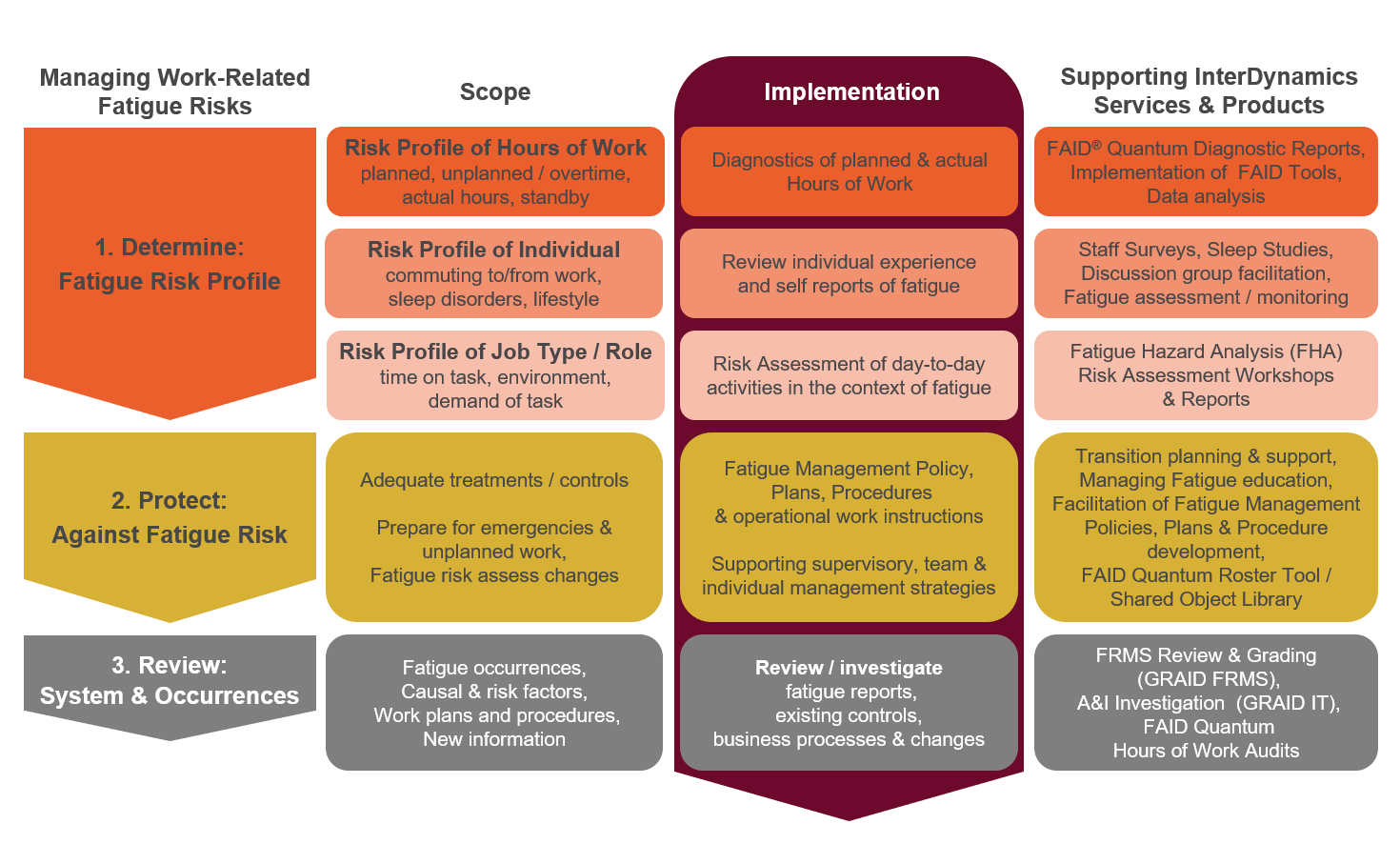Our Risk-Based Approach to Fatigue Management
How do you know if your business is safe from fatigue-related accidents? At what degree of impairment does fatigue become a danger?
Fatigue is difficult to assess because it is subject to a wide range of factors, including job type, activity, environment and time of day. With so many variables, a risk management approach is vital.
Many organisations faced with the challenge of managing fatigue can easily become daunted by the prospect. Impairment associated with fatigue can be difficult to detect, and harder still, is judging the level of impairment that could present a danger. Added to the complexity of individual differences in experiencing fatigue is the context for individuals (e.g. job type, activities, environment, time of day, etc.) and the degree to which this is vulnerable to fatigue.
Given the diverse factors needed to be taken into account in managing work-related fatigue, a risk-based approach that gives consideration to models like James Reason’s ‘Swiss Cheese’ model is often recommended. The Defences-in-Depth model (Dawson & McCulloch, Sleep Med. Rev. 2005) applies James Reason’s model to the fatigue context, targeting prevention through a series of barriers, safeguards, and defences. InterDynamics has included these concepts and ideas in its risk-based approach to managing fatigue, summarised in the below diagram.
InterDynamics’ approach recognises the development of an appropriately informed plan to manage fatigue (a Fatigue Management Plan) as foundational to the effective implementation and on-going improvement of a Fatigue Risk Management System (FRMS). Staff engagement and consultation is key to a smooth FRMS implementation, as cultural change is often required for the organisation to transition its perception and management of fatigue in line with the organisation’s fatigue policy commitment.
Our experience assisting clients of all sizes across various industries and circumstances has brought insights into the most effective organisational team structures and project plans for successful implementation.
Safer organisations, step by step
The aim of the Risk-Based Approach is to provide our clients with the best possible tools and resources to manage fatigue risks. It is founded on four pillars: consultation, staff engagement, shared responsibility and effective risk management.
This comprehensive methodology includes three key steps:
- Determining the fatigue risk profile of the organisation
- Protecting against unacceptable fatigue-related risks
- Reviewing systems to ensure protection measures remain adequate.
The diagram below demonstrates our methodology across these key steps. Our suggested scope and implementation activities can be seen in columns two and three, while the fourth column highlights those services and products that allow an organisation to implement our solution.
Risk-based approach to managing fatigue
We have developed a range of products and services to support our Risk-Based Approach and assist in the development and implementation of multiple layers of protection. These include:
- Organisational Fatigue Risk Management Systems (FRMS) benchmarking and grading systems
- Fatigue surveys
- Managing fatigue training for employees
- Fatigue Hazard Analysis risk assessments
- Training in the context and use of FAID Quantum
- Change management support
- Assistance in incident investigation
- Hours of Work fatigue diagnostic reports
- Data analysis (of fatigue safety metrics)
- Fatigue management policy, procedure and FRMS reviews, and
- The provision of decision making support tools to assist in the identification and treatment of fatigue related risks.

